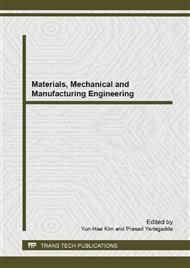p.686
p.691
p.695
p.703
p.708
p.712
p.719
p.725
p.729
A Novel Traffic Flow Forecasting Method Based on the Artificial Neural Networks and Intelligent Transportation Systems Data Mining
Abstract:
Useful information often hides in traffic management system. To mine useful data, prior knowledge has been used to train the artificial neural network (ANN) to identify the traffic conditions in the traffic information forecasting. Subjective information has hence been introduced into the ANN model. To solve this problem, a new ANN model is proposed based on the data mining technology in this work. The Self-Organized Feature Map (SOFM) is firstly employed to cluster the traffic data through an unsupervised learning and provide the labels for these data. Then labeled data were used to train the GA-Chaos optimized RBF neural network. Herein, the GA-Chaos algorithm is used to train the RBF parameters. Experimental tests use practical data sets from the Intelligent Transportation Systems (ITS) to validate the performance of the proposed ANN model. The results show that the proposed method can extract the potential patterns hidden in the traffic data and can accurately predict the future traffic state. The prediction accuracy is beyond 95%.
Info:
Periodical:
Pages:
708-711
Citation:
Online since:
November 2013
Authors:
Price:
Сopyright:
© 2014 Trans Tech Publications Ltd. All Rights Reserved
Share:
Citation:


